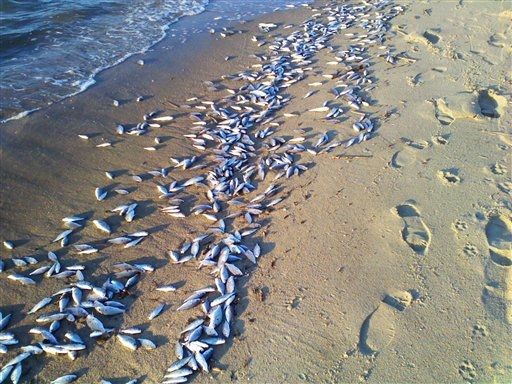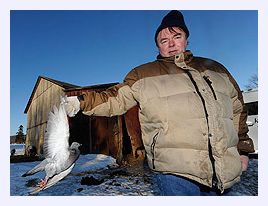
© Associated Press / Charles PoukishThis Jan. 3, 2011 photo provided by the Maryland Department of the Environment shows dead fish, mostly spot, along with a few small croaker, at Northwest Creek on Kent Island in Stevensville. Maryland officials say an estimated two million fish have been reported dead south of the Bay Bridge since last week.
It could be two weeks before state officials know for certain what killed an estimated 2 million fish in the Chesapeake Bay. Or, they may never find out the exact cause.
Biologists with the Maryland Department of the Environment sent tissue samples from the fish, mostly juvenile spot 3- to 6-inches long, to state labs to pinpoint the reason they died. But for now, they believe a rapid drop in temperature in December caused cold-water stress, said MDE spokeswoman Dawn Stoltzfus.
Stoltzfus said there are no indications that water quality or pollution contributed to the kill, but the tissue samples will be analyzed for contaminants. Samples also will be sent to the Department of Natural Resources for bacteria analysis. However, she cautioned that "most, if not all, of the fish may be too decomposed to expect meaningful results."
The bay's surface water temperature late last month - 32.9 degrees--was the coldest in 25 years, according to state records. Historical lows were recorded at 13 locations on the bay, from the mouth of the Elk River to Rock Hall and Kent Island to Point Lookout. Spot have little tolerance for temperatures below 35.6 degrees.

